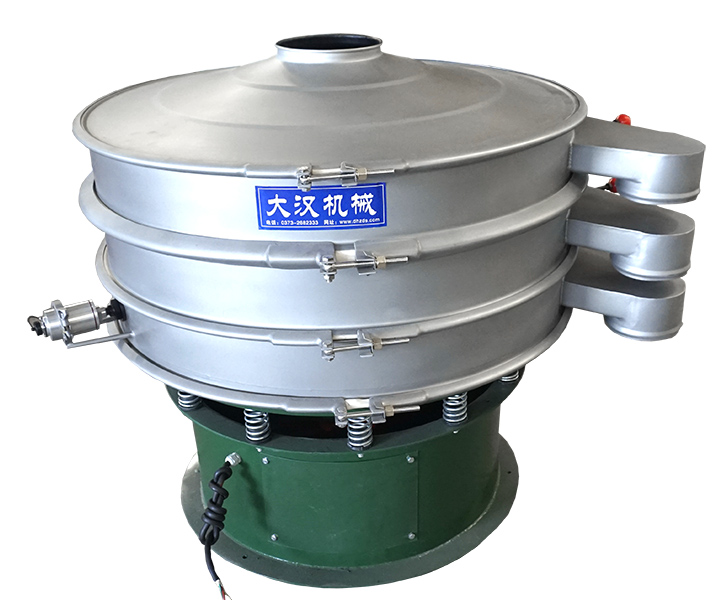
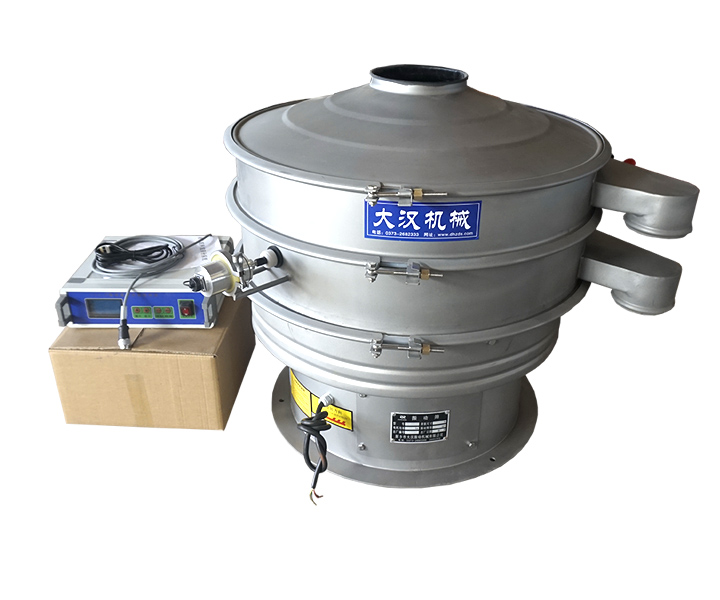
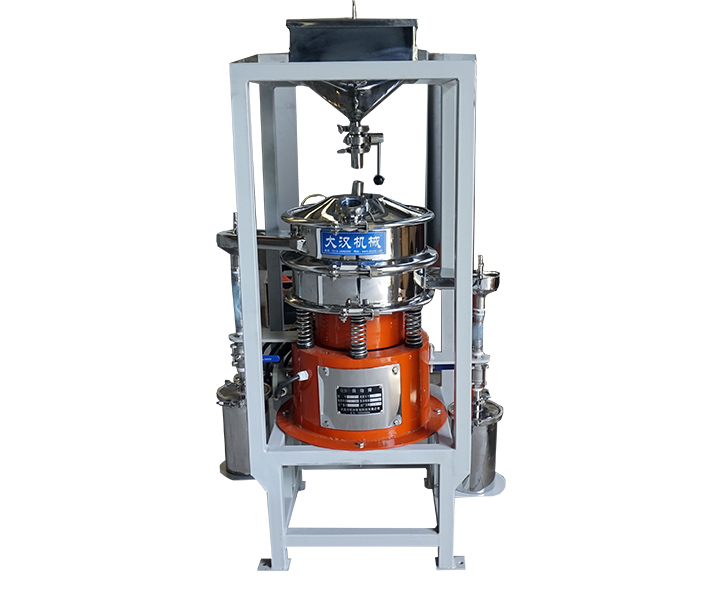
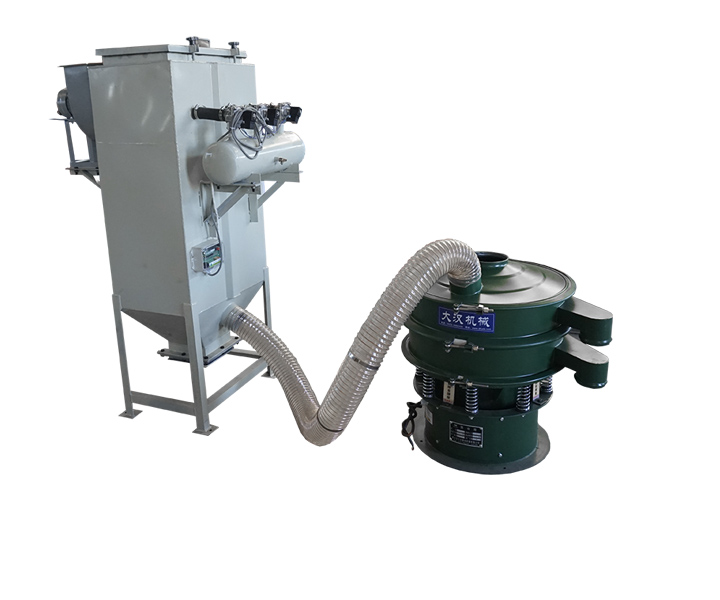
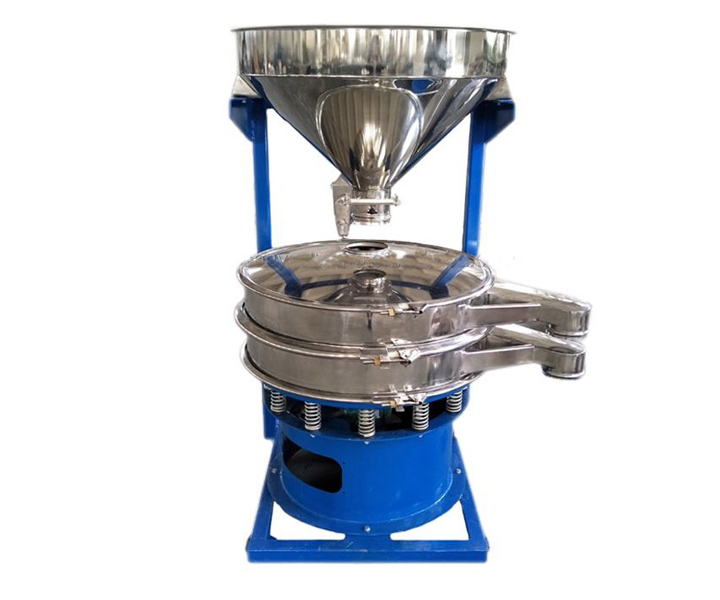





Special equipment that uses ultrasonic vibrations to screen food powder, which helps break the surface tension of food powder particles and prevent them from clogging the screen.
![]()
![]()
Price:$800.00-$3,000.00/Set
Consult now and enjoy a 10% discount
Diameter: DHC400-1800mm Mesh size: 60-635 mesh
Processing capacity: 0.2-5t/h
Ultrasonic vibration frequency: 38KHz
Transducer: Internal/External
Ultrasonic gear: continuous 1-9 gears, pulse 2 gears
Application:Used for screening, grading, removing impurities, solving powder clogging problems, improving fluidity and mixing uniformity, to improve the quality and processing effect of food powder, suitable for screening flour, starch, sugar powder, pepper, allspice powder, coffee Powder, tea powder, cocoa powder, protein powder, bread crumbs, milk powder, etc.
Commitment: Free Shipping/5 Days Delivery/30-Day Returns/Support Customization
Battery anode materials vibrating sieve, also called lithium battery material vibrating sieve, during the battery manufacturing process, the anode material is usually a powder composed of graphite, carbon nanotubes and other materials. Through the function of the vibrating screen, the negative electrode material can be screened according to the particle size to remove impurities and excessively large or small particles to obtain negative electrode materials that meet the requirements.
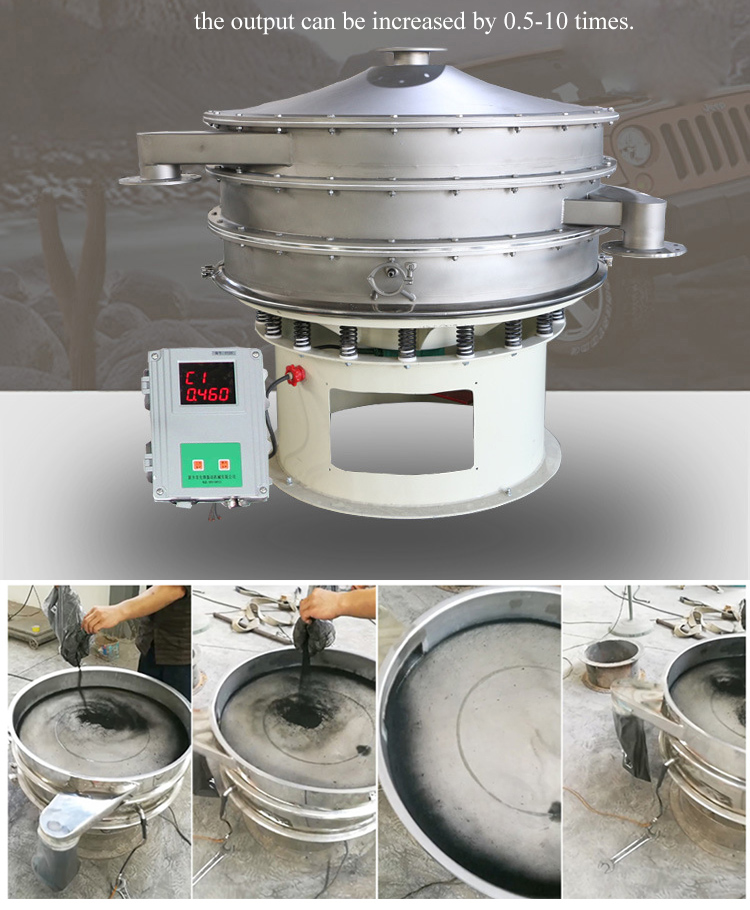
Battery anode materials vibrating sieve needs to be made of 304 stainless steel for the whole machine. The design should be closed and the inlet and outlet should be designed to be connected to automatic feeding and receiving devices. This series of equipment has the characteristics of small size, low energy consumption, convenient movement, good sealing performance and high safety performance.

The following are several applications of vibrating sieves for battery negative electrode materials:
1. Particle classification: Battery anode materials are usually composed of fine particles, and these particles need to meet certain size and shape requirements during the manufacturing process. vibrating sieves can separate unqualified particles from raw materials and ensure that the final product meets the specified particle size distribution.
2. Removal of impurities: During the preparation process of battery negative electrode materials, there may be some impurities or foreign matter, such as metal flakes, agglomeration of particles, etc. The vibrating sieve can remove these impurities from the negative electrode material through different mesh sizes, improving the purity and quality of the material.
3. Screening of mixed materials: In the preparation of battery anode materials, different types of materials often need to be mixed to obtain the required performance and characteristics. vibrating sieves can separate and screen materials of different particle sizes and types to ensure the uniformity and consistency of mixed materials.
Improve material uniformity
The vibrating sieve can separate and classify the negative electrode materials according to their particle size through the action of vibration force and screen mesh. This can improve the uniformity of the negative electrode material and reduce the differences between particles, ensuring battery consistency and performance stability.
Control particle size range
By selecting the appropriate screen mesh and adjusting the amplitude and frequency of the vibrating sieve, the particle size range of the negative electrode material can be precisely controlled. This helps meet the particle size requirements for anode materials during the battery manufacturing process, ensuring battery performance and cycle life.
Remove impurities and substandard particles
The vibrating sieve can separate impurities and unqualified particles from the negative electrode material and improve the purity and quality of the negative electrode material. This helps reduce the defective rate during the battery manufacturing process and improves battery quality and reliability.
Not easy to clog
The battery negative electrode material vibrating sieve with an ultrasonic system makes the screen vibrate at high frequency and can screen battery powder on a mesh as fine as 20 microns without causing clogging or clogging.
Increase productivity
The battery negative electrode material vibrating sieve can realize the automated screening process and greatly improve production efficiency. Compared with manual screening, vibrating sieves can complete screening tasks quickly and continuously, saving human resources and time costs.
Flexibility and adjustability
The amplitude and frequency of the vibrating sieve can be adjusted as needed to adapt to the screening requirements of different negative electrode materials. This makes the vibrating sieve highly flexible and adaptable, able to cope with the needs of different materials and processes.
| Model | Screen Diameter (mm) |
Sieving Area (m2) |
Screen Size (mesh) |
Layers | Power (KW) |
| DHC-400 | 340 | 0.091 | 80-600 | 1~3 | 0.18 |
| DHC-600 | 540 | 0.229 | 0.25 | ||
| DHC-800 | 730 | 0.418 | 0.55 | ||
| DHC-1000 | 900 | 0.636 | 0.75 | ||
| DHC-1200 | 1100 | 0.95 | 1.1 | ||
| DHC-1500 | 1400 | 1.539 | 1.5 | ||
| DHC-1800 | 1700 | 2.269 | 2.2 | ||
| DHC-2000 | 1886 | 2.792 | 2.2 |
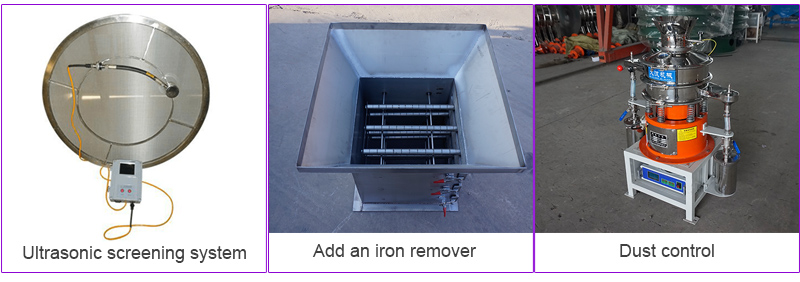
In order to solve the problems that may be encountered in the screening process of battery negative electrode materials, the battery negative electrode material vibrating screen has made the following improvements for you to choose from:
1. Ultrasonic screening system: Particles in battery negative electrode materials may adhere to each other and form agglomerates due to factors such as surface adhesion or humidity. This can cause screening difficulties so that particles cannot pass freely through the screen. At this time, you can use our ultrasonic screening system. This series of vibrating sieve generates high-frequency and low-amplitude ultrasonic vibration waves on the screen surface, which can effectively solve the problems of network blocking, sticking, adsorption, troupe, and static electricity of battery negative materials. , light specific gravity and other screening problems, it is an ideal screening equipment for new energy materials.
2. Add an iron remover: In the process of vibrating the battery negative electrode material, the role of the iron remover can be added to further improve the screening effect and material quality. The iron remover is mainly used to remove iron impurities in negative electrode materials, which may include iron filings, iron powder, etc., to increase the purity of the material.
3. Dust control: Battery negative electrode materials may generate a large amount of dust during the screening process. Not only does this pose a potential hazard to the operator's health, it can also cause contamination of the equipment and surrounding environment. Appropriate protective measures, such as dust suppression devices, ventilation equipment or closed systems, need to be taken to control the generation and spread of dust.
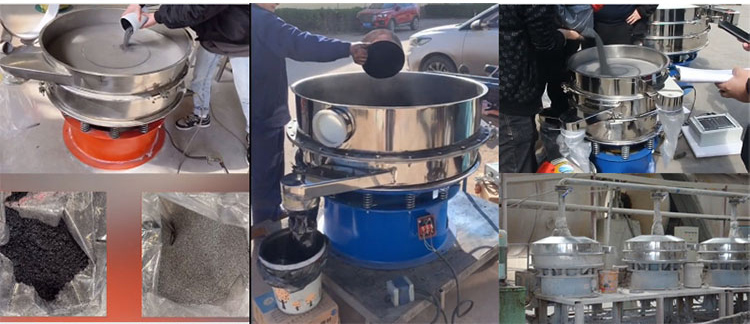
| Screening materials | Use | Mesh size | Capacity |
| Graphite powder | For the production of negative electrode materials for lithium-ion batteries | 100 mesh | 500 kg/h |
| Metal oxide particles | Used in the production of negative electrode materials for nickel-metal hydride batteries | 200 mesh | 300 kg/h |
| Lithium titanate powder | Used in the production of negative electrode materials for lithium titanate batteries | 80 mesh | 200 kg/h |
| Lithium cobalt oxide powder | Used in the production of negative electrode materials for lithium cobalt oxide batteries | 150 mesh | 400 kg/h |
| Lithium iron phosphate powder | Used in the production of negative electrode materials for lithium iron phosphate batteries | 120 mesh | 250 kg/h |
Address:China,Yanjin county forest park gate to the west 1000 meters north road.